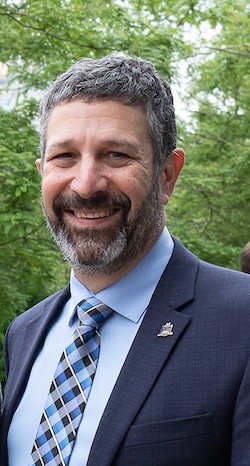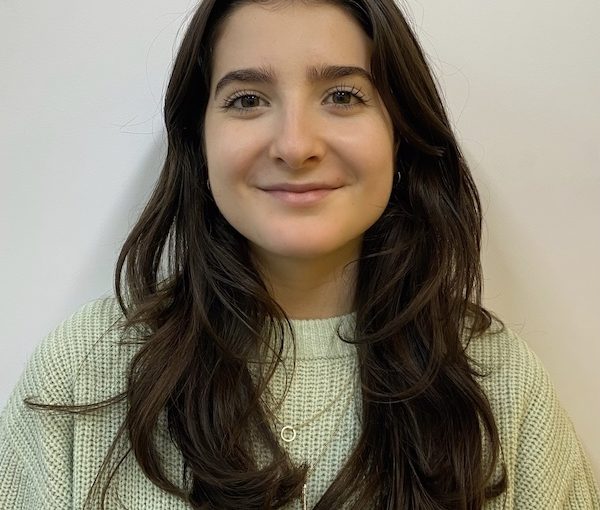King David High School student and Climate Education Reform British Columbia member Sara Bauman (photo from Sara Bauman)
Weather events like the recent floods across British Columbia and last summer’s record fire season are prompting questions about how to plan long-term for the changing environment. One King David High School senior has come up with part of the answer: create a climate curriculum that prepares tomorrow’s leaders for addressing climate change.
Sara Bauman is a member of Climate Education Reform British Columbia (CERBC), a group of approximately 20 high school students who believe that the world’s pressing environmental challenges deserve a place in the province’s education system. Bauman says lessons about the physical climate system and the science behind phenomena such as greenhouse gases and sea-level rise should be a standard part of what students learn in school.
CERBC is pushing for a new curriculum that includes mandatory courses on climate-related topics and for the subjects to be taught across K-12 grade levels. At the present time, Grade 11 and Grade 12 students have the option to take environmental sciences, which contains a certain number of units relating to climate change. But the elective aspect, Bauman explained, means that not all students are learning about climate science or its implications.
“We want to get students to understand the urgency of the climate crisis and the need to act now,” Bauman told the Independent. “[If] not every student has to take it, different students are going to be receiving different knowledge, some less than others. [We] need the whole generation to be prepared to combat climate change, not just a few.”
A 2019 study conducted by researchers at Lund University, in Sweden, found that Canadian schools as a whole fell short when it came to educating students about climate change. In British Columbia specifically, research indicated that schools often failed to teach three core concepts: that the climate is warming, that there is consensus among experts that climate change exists, and that human-driven solutions are possible. The researchers also noted that there is no consensus among provinces or school districts when it comes to teaching students about climate change.
In October, CERBC met with B.C. Minister of Education Jennifer Whiteside to discuss its proposal. The students outlined six needs that they felt would be essential to a successful K-12 climate curriculum, including enabling students to “understand the urgency of the climate crisis” and to recognize that there are ways to mitigate or slow climate change.
Bauman said the program needs to be interdisciplinary because climate change has social implications as well. “We want students to understand the relationship that climate change has with social justice issues,” she said, noting that environmental advocacy “can’t be separated from other movements, like the Black Lives Matter or Indigenous rights movements, because, at the end of the day, climate change does come down to systems and how we structure our lives. And we also want to inspire students to start to critically engage in politics and see how they can create policy change.”
KDHS head of school Russ Klein said CERBC’s call for a mandatory climate curriculum reflects a wider sentiment among today’s students that the topic needs to addressed. Even though Bauman is the only KDHS student representing CERBC at this time, other students at KDHS are finding their own ways to raise social awareness.

“[In] the last two or three years, especially with Greta Thunberg and the climate protests, we’ve had a whole bunch of students actively engaging with the school, the [administration], climate protests and [other types of] activism,” said Klein.
Students at KDHS have a variety of avenues in which to get involved, including the youth groups Sustainabiliteens and the Green Club, which are aligned with addressing social and environmental issues.
Klein said Bauman brings an important quality to this dialogue. “She lends a Jewish voice of perspective to some of what she’s been doing, which I think is also very relevant for other people,” he said. “We need more diversity in the room.”
Of course, students aren’t the only ones who want to see a curriculum that reflects today’s challenges. Many teachers do as well. The B.C. Teachers’ Federation publishes downloadable “Climate Change Heroes Lesson Plans” to help teachers develop new learning modules.
Still, Klein said, many schools want the province to lead this effort. “There are so many different things and priorities for schools to do, and I think this one has to be very high on the list. And how we do that, of course, is [we] look to government. These things must be mandated,” he said, pointing out that, until the province implemented LEED-compliant building codes requiring contractors to adhere to sustainable practices, “builders weren’t doing anything. Because why would they? But when it’s the law of the land, they have no choice.”
Last week, Whiteside’s office issued a statement acknowledging that it is working with the BCTF and the Climate Change Secretariat to increase climate-related resources for teachers. It noted, “The flexible nature of B.C.’s curriculum provides many opportunities in which topics like climate change can be explored in various levels of detail.”
The ministry maintains that both K-10 and 11-12 curricula contain resources for “possible connections” to climate change that allow teachers to introduce new study topics. The elective nature of 11 and 12 grade courses, it said, “offer[s] interested students an opportunity to delve deeper [and] encourage exploration from a local to a global scale.”
While the ministry did not say whether it will invite the students to participate in writing a new climate curriculum, Bauman said she hopes the ministry will accept CERBC’s input – “Because we are the students. We know what is best for our generation [when it comes to] learning. I think the ministry doesn’t realize what an asset we are to helping this process.
“We want to create a relationship with them,” said Bauman. “We want to partner with them [and] help the process in any way that we can.”
Bauman said it’s important for students to be part of the solution.
“The most important thing, at least for me,” she said, “is to get students to envision a better world and help them feel inspired, empowered and engaged because, a lot of the time, we hear about climate change and it’s a lot of doom and gloom. [Working] with CERBC has allowed me to put my climate anxiety into other things and channel it into meaningful action, and I want other students to have the chance to do the same.”
Jan Lee’s articles, op-eds and blog posts have been published in B’nai B’rith Magazine, Voices of Conservative and Masorti Judaism, Times of Israel and Baltimore Jewish Times, as well as a number of business, environmental and travel publications. Her blog can be found at multiculturaljew.polestarpassages.com.

